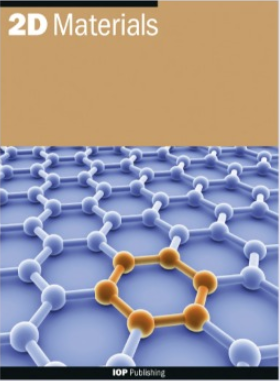Graphdiyne (CnH2n-2) / NiWO4 self-assembled p-n junction characterized with in situ XPS for efficient photocatalytic hydrogen production
IF 4.3
3区 材料科学
Q2 MATERIALS SCIENCE, MULTIDISCIPLINARY
引用次数: 0
Abstract
Abstract As is well known, how to deeply understand the charge separation and charge transfer capabilities of catalysts, as well as how to optimize these capabilities of catalysts to improve hydrogen production performance, remains a huge challenge. In recent years, a new type of carbon material graphdiyne (GDY) has been proposed. GDY acetylene has a special atomic arrangement that graphene does not have a two-dimensional network of sp 2 and sp conjugated intersections makes it easier to construct active sites and improve photocatalytic ability. In addition, GDY also has the advantage of adjusting the bandgap of other catalysts and inhibiting carrier recombination, making it more prone to hydrogen evolution reactions. In addition to using mechanical ball milling to produce GDY, NiWO 4 without precious metals was also prepared. The sheet-like structure of GDY in the composite catalyst provides a anchoring site and more active sites for the granular NiWO 4 . And the composite catalyst fully enhances the good conductivity of GDY and its unique ability to enhance electron transfer, greatly improving the ability of NiWO 4 as a single substance. Through in-situ x-ray photoelectron spectrometer, it was demonstrated that a p–n heterojunction was constructed between GDY and NiWO 4 in the composite catalyst, further enhancing the synergistic effect between the two, resulting in a hydrogen production rate of 90.92 μ mol for the composite catalyst is 4.56 times higher than that of GDY and 4.97 times higher than that of NiWO 4 , respectively, and the stability of the composite catalyst is significantly higher than that of each single catalyst.石墨炔(CnH2n-2) / NiWO4自组装p-n结原位XPS表征高效光催化制氢
摘要众所周知,如何深入了解催化剂的电荷分离和电荷转移能力,以及如何优化催化剂的这些能力以提高制氢性能,仍然是一个巨大的挑战。近年来,人们提出了一种新型碳材料石墨炔(GDY)。GDY乙炔具有特殊的原子排列,石墨烯不具有sp 2的二维网络,sp共轭交点使其更容易构建活性位点,提高光催化能力。此外,GDY还具有调节其他催化剂带隙和抑制载流子复合的优点,使其更容易发生析氢反应。除采用机械球磨法制备GDY外,还制备了不含贵金属的NiWO 4。复合催化剂中GDY的片状结构为颗粒状niwo4提供了锚定位点和更多的活性位点。并且复合催化剂充分增强了GDY良好的导电性及其特有的增强电子转移的能力,大大提高了NiWO 4作为单一物质的能力。通过原位x射线光电子谱仪,这是证明一个pn GDY和NiWO 4之间建立了异质结复合催化剂,进一步加强两者之间的协同效应,导致氢产量为90.92μ复合催化剂的摩尔GDY的4.56倍和4.97倍NiWO 4日分别复合催化剂的稳定性显著高于每一个催化剂。
本文章由计算机程序翻译,如有差异,请以英文原文为准。
求助全文
约1分钟内获得全文
求助全文
来源期刊

2D Materials
MATERIALS SCIENCE, MULTIDISCIPLINARY-
CiteScore
10.70
自引率
5.50%
发文量
138
审稿时长
1.5 months
期刊介绍:
2D Materials is a multidisciplinary, electronic-only journal devoted to publishing fundamental and applied research of the highest quality and impact covering all aspects of graphene and related two-dimensional materials.
 求助内容:
求助内容: 应助结果提醒方式:
应助结果提醒方式:


